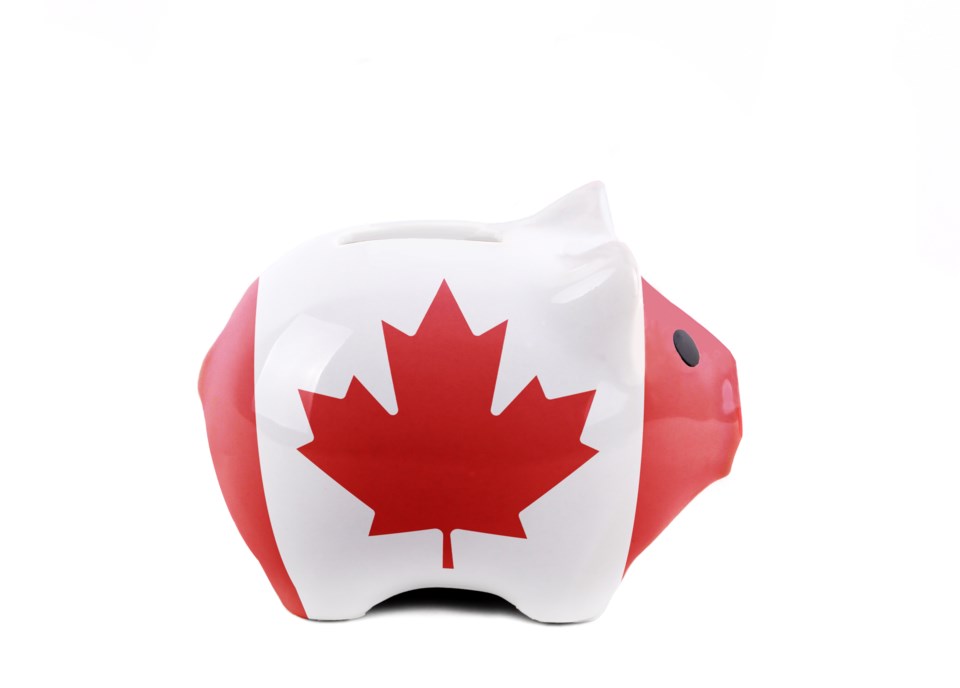A lot of people believe government is inherently terrible with money—and there’s no shortage of boondoggles you can hold up as proof like ArriveCan or all the pork in the Economic Action Plan. But the cold reality is there are a lot of economists who go through the federal budget every year with a fine-tooth comb and guess what? Almost all of the money goes where it’s supposed to.
It goes to health-care, welfare, benefits like Old Age Security (OAS) and other supportive funding, the military, matching funds with provinces to keep tuition affordable, maintaining infrastructure, the RCMP, the growing interest payments on our national debt, funding some innovation and investment, running government, and so forth. There’s a lot less discretionary spending in our $500-billion-plus budget than people imagine and the boondoggles we get upset about only really represent a few percentage points of the total.
This isn’t meant as a defence or condemnation of any particular government, it’s just stating facts. And it’s also terrible news, because it means there’s no simple way to solve Canada’s many problems by making a few easy cuts here and there. It doesn’t matter as much who is handling the purse if 95 per cent of the money in it is already spoken for.
Looming over everything is a demographic time bomb that started ticking almost 60 years ago. There are 8 million boomers and 2 million Canadians who are even older, which means we’re entering an era where one in four Canadians will be retired, using lots of health-care, paying a lot less taxes, and benefitting from social programs like OAS.
At the same time, people want government to do more—build housing again, hire more doctors and nurses, build more hospitals, get addicts and the mentally ill off the streets, get tough on crime and repeat offenders, increase military funding to meet our NATO commitments, improve infrastructure, and so on.
None of that will be cheap. Given how tight things are when it comes to the budget already, our options are to, A) add more taxpayers to the bottom of the population pyramid through immigration, which will worsen our housing availability and affordability crisis; B) raise taxes, which is never popular even if government was mostly good with our money; or C) cut spending, which means these things people want and need will never happen.
Canada has so far gone with Option A, as well as a little of Option B by raising the capital gains threshold—which should be more popular than it is given it will only affect a tiny percentage of people.
Unless we accept a lot more of Option A, then all we’re really left with is raising government revenues by raising taxes, with maybe a little of Option C thrown in—such as reducing senior spending by raising the retirement age.
Take the cost of supporting our seniors. Right now, about 19 per cent of Canadians are over the age of 65. It’s going to be about 24 to 25 per cent soon, which represents another two million-plus seniors. The editors of the Globe and Mail calculated OAS costs will have increased to $81 billion a year in 2025 from $59 billion in 2020. That’s $22 billion more, and growing.
When it comes to health-care, the average spending per person is about $2,700/year, according to the Canadian Medical Association, while the average cost for Canadians over the age of 65 is closer to $12,000. Two million more seniors will have an additional annual health-care cost of roughly $18.6 billion.
Want government to build housing again? It has been estimated we need about 4.4 million affordable homes in this country. According to my napkin, if the cost to build is $400 per square foot on average, and the average size of these new homes is 1,000 square feet, then we need a federal investment of $1.76 trillion dollars. And we need it yesterday.
Want more doctors and nurses? The federal government estimates we need about 49,000 more family doctors by 2031. The average cost per doctor to the Canadian health-care system is about $284,515 each year. Multiply one by the other and we’re looking at $14 billion a year. For nurses? The average salary is $71,894, and we need 117,600 of them by 2030, according to the Canadian Federation of Nurses Unions. That’s a hit of another $8.5 billion per year.
NATO? We’re expected to spend two per cent of our GDP on the military and we have not been keeping up. We’re currently underfunding our military by about $57 billion for 2023 through 2027 according to the Canadian Global Affairs Institute, which is an average of $14.25 billion a year.
I can’t even begin to calculate what it would cost to reopen and staff new mental-health centres, to get our addicts and mentally ill off the streets. Or what the price tag would be to add all the public defenders, judges, courtrooms, police resources, prisons, prison guards, and other buildings and staff we would need to get tough on crime.
All of the other things we need—bridges, ports, airports, high-speed rail, investments in industry and innovation, subsidized tuitions, etc.—also have costs exceeding what’s currently in the budget.
We all know what Canadians want and need from our government. The real question is whether we’re willing to pay more to get it, accept record numbers of immigrants we don’t have housing for, or both. If the answer is no to both questions, and cutting costs is almost impossible, then where does that leave us?




